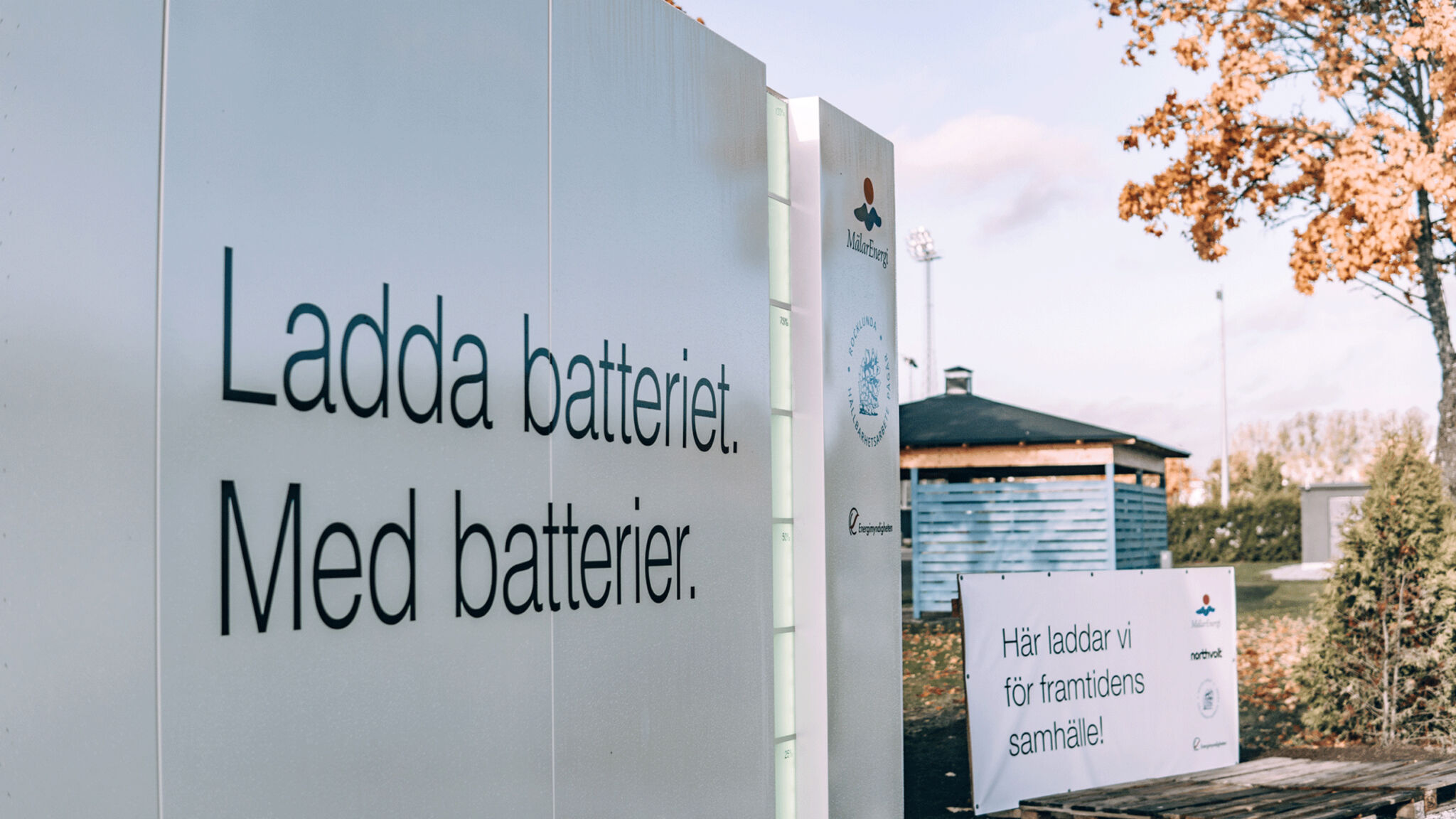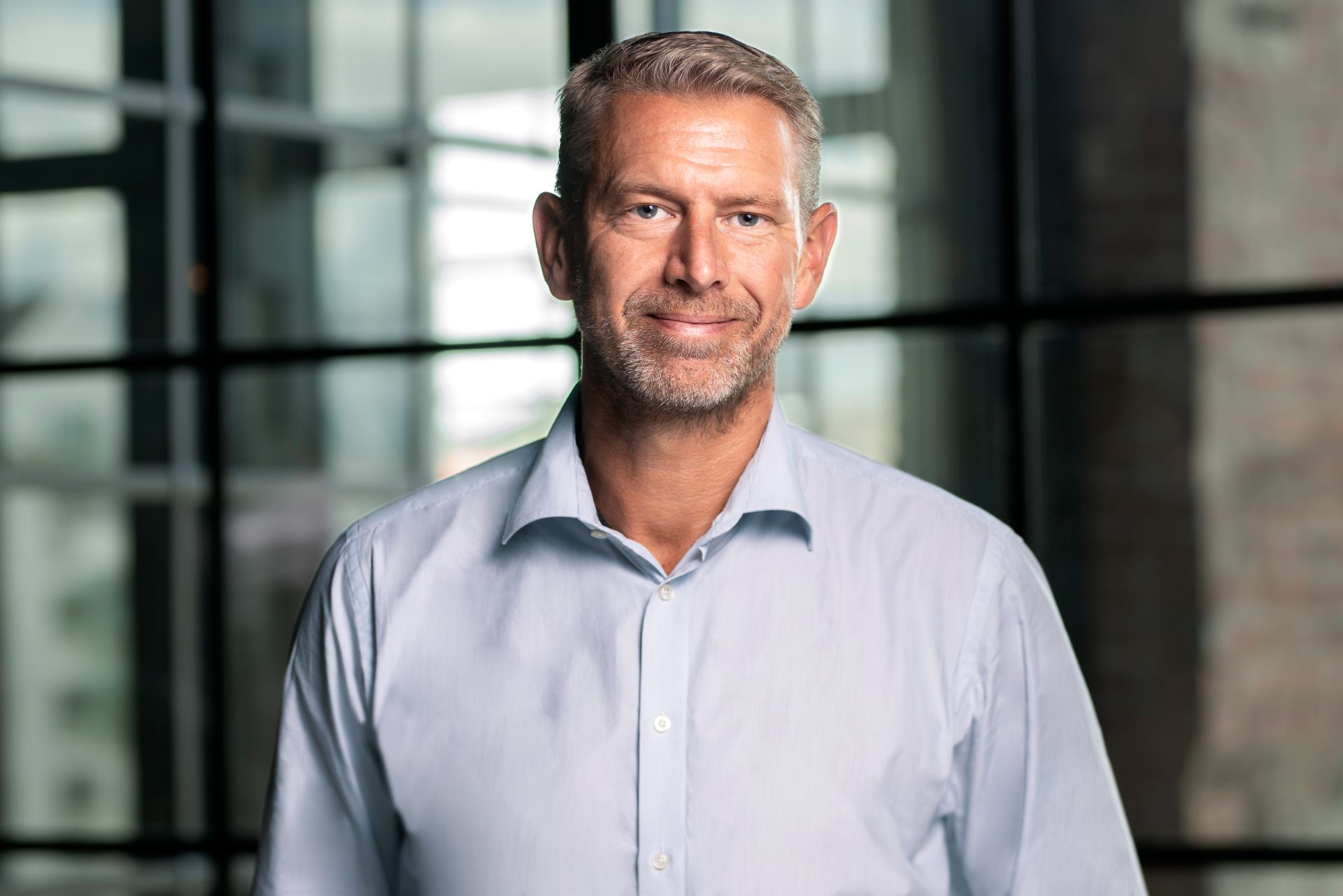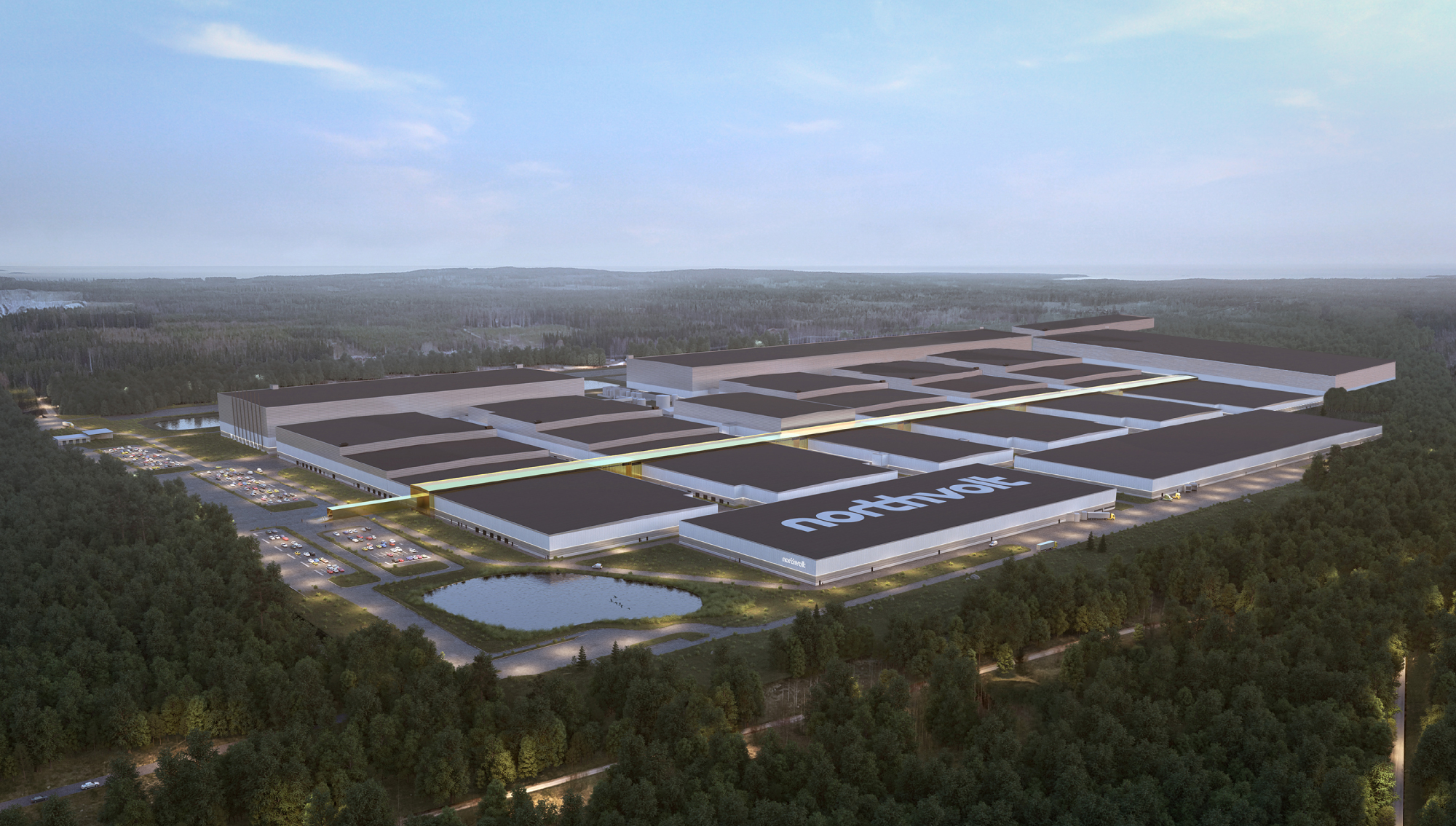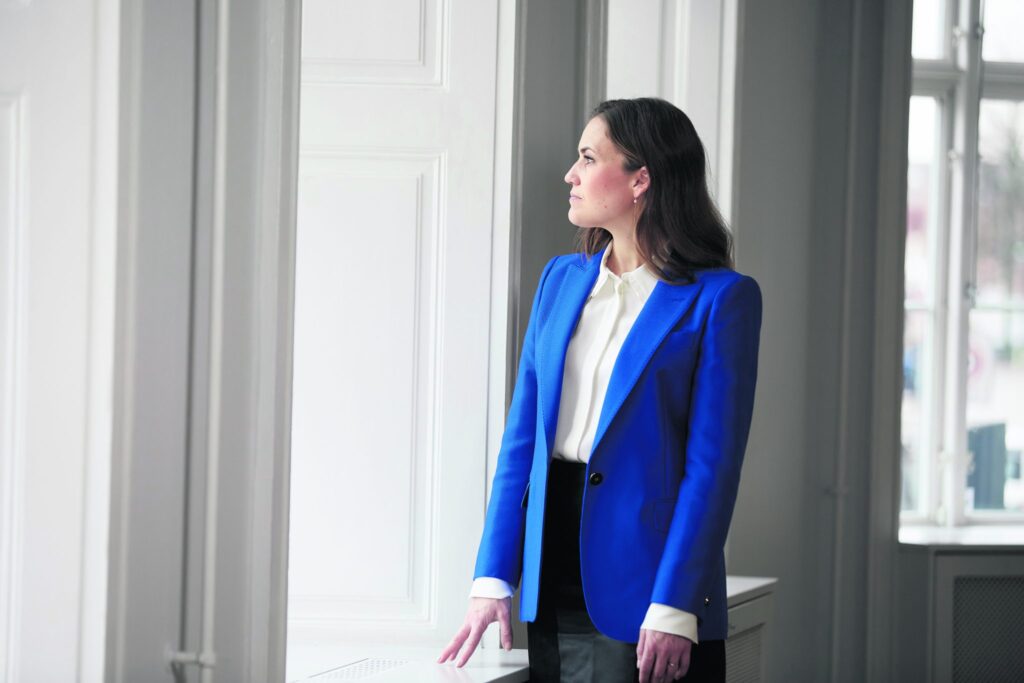Sustainability

Nordics Lead The Charge
04/11 - Greg Morton
Put together the EU’s commitment to the Paris Treaty (to reduce greenhouse gas emissions by at least 40% by 2030) with an ever-growing appetite from the public to “go green,” and it becomes obvious that the global electric car industry is heading for a boom. But while demand is one thing, sorting out how the next generations of vehicles can be powered is another. Northvolt is one of several companies in and around the sector in the Nordic region that not only understood that simple equation themselves but, sensing an opportunity, they acted on it. And with favorable infrastructure conditions to rely on, a series of other large and smaller scale projects, including the likes of FREYR and Morrow in Norway, and Denmark’s Monta are keen to be part of the revolution.
The numbers add up
The business case for battery manufacturers Northvolt, FREYR, Morrow and others is straightforward. Demand for vehicles is growing, electricity is relatively cheap in the Nordics, and the countries have good transport links with the rest of Europe – which is of special significance bearing in mind the weight, and consequential cost, of moving batteries. The market is already growing. Forecasts vary, but even taking the coronavirus pandemic into account, electric car sales in Western Europe doubled to 727,927 in 2020 and they are expected to reach some 1 million in 2021.* nordic business // 19 Photo: Northvolt By 2033 – five years earlier than previously expected – EV sales will exceed those of combustion engines in Europe, China and the US according to another study by Ernst & Young. Furthermore, they estimate that by 2045, non-EV sales will have more or less collapsed, accounting for less than 1% of the global car market.
Northvolt – a star is born
Enjoying first mover advantage in the Nordic region is Sweden’s Northvolt, Europe’s largest battery start-up, founded in Sweden in 2016, originally under the name SGF Energie. CEO Peter Carlsson, who spent six years at Tesla was in a better position than most to gauge which way the wind was blowing during his time in charge of the supply chain at Elon Musk’s groundbreaking company. Carlsson realized that there was an opportunity for a new producer in his home country of Sweden to rival Asia in the battle for battery making supremacy by establishing a European supply chain. The company’s mission is bold and straightforward – “to build the world’s greenest battery to enable the European transition to renewable energy.” At the heart of its commitment the continent’s largest battery cell factory, Northvolt Ett, in Skellefteå, northern Sweden which will eventually have an annual battery cell production of 60 GWh. If it succeeds in meeting its targets it could gain a 25% share in the European market for electric vehicle batteries by 2030.

Time flies
A lot has happened in a relatively short space of time at Northvolt. The company was only officially launched in March 2017, but really hit the headlines seven months later with the announcement that it would establish its first so-called gigafactory, Northvolt Ett, in Skellefteå, in the north of Sweden. Further south in Västerås meanwhile, Northvolt Labs, a demonstration factory and research facility would also be built, and construction began the follithium ion batteries before largescale production takes off. When the 19,000 sqm plant was originally conceived it was expected to have an annual production capacity of 350 MWh and create jobs for up to 400 people, although with greater investment funding granted since, that could double in years to come. The eyes of the world, including the biggest car manufacturers were sitting up and taking notice of events in Sweden and in 2019, Northvolt announced that together with Volkswagen (which now owns 20% of the company) plans for a second factory – Northvolt Zwei – in Salzgitter, northern Germany were unveiled. In keeping with its strategy of partnering with major car makers, Northvolt also signed a €2 billion deal with BMW to start delivering batteries to the Bavarian giant from 2024. The move made sense from the Germans’ perspective with BMW having publicly stated its intention to have 25 electrified models on the roads – more than half of which will be fully-electric – by 2023. Meanwhile, to underline the flexibility of the technology, major partners from other sectors including Scania, Siemens, Vattenfall, ABB and wind turbine manufacturer Vestas have come onboard. 2021 has been another busy year for Northvolt. March saw VW place an order of $14 billion for battery cells, while in the summer, a new capital injection of $2.75 billion in equity was secured, which will go towards the expansion of the Skellefteå gigafactory. Annual production capacity at Northvolt Ett will consequently rise to 60 GWh, up from the previously envisaged 40GWh. To put that in context, Northvolt will be able to produce enough batteries for 1 million electric vehicles a year.

CEO PETER CARLSSON
CEO Peter Carlsson, who spent six years at Tesla was in a better position than most to gauge which way the wind was blowing during his time in charge of the supply chain at Elon Musk’s groundbreaking company. Carlsson realized that there was an opportunity for a new producer in his home country of Sweden to rival Asia in the battle for battery making supremacy by establishing a European supply chain. The company’s mission is bold and straightforward – “to build the world’s greenest battery to enable the European transition to renewable energy.”
Beyond the automobile
Northvolt’s strategy goes much further than making batteries for cars though and from the outset, renewable energy generation has been a key focus. Going back to the Paris Treaty, if we are to replace fossil fuels with cleaner forms of energy it will inevitably have consequences on the stability of the energy grid. In simple terms, the “holy grail” that Peter Carlsson is aiming for is that his company will help to ensure grid stability by producing batteries capable of storing energy when the wind is not blowing, and the sun isn’t shining. Meanwhile, the recycling of materials from batteries is another area of interest. While global lithium deposits are still in plentiful supply for now, mining it on the kind of scale that will be necessary moving forward has obvious environmental consequences. This in turn puts pressure on battery manufacturers, including Northvolt, to work on recycling their own materials. With this in mind, half of all Northvolt’s raw material requirements will be sourced from recycled batteries by 2030. Revolt, Northvolt’s recycling program was officially launched in December 2019 and a pilot plant has been built in Västerås. Meanwhile, a full-scale recycling plant at the Northvolt Ett gigafactory in Skellefteå will be established by 2022. Announcing the launch of the recycling initiative, Carlsson said, “With this program Northvolt will be able to recover valuable materials from cells and return them to manufacturing flows. Recycling will reduce the need for mining raw materials, improve security of supply and lower the environmental footprint of Northvolt cells by reducing mining-related emissions.”
Sky-high ambition
Bearing in mind the location of Northvolt’s gigafactory, just the simple task of getting numerous people from Skellefteå airport to the plant 30 km away presents a logistical challenge. In response, the company has joined a project looking at manufacturing “air taxis” that take off vertically like a helicopter. The hope here is that these vehicles will offer a more sustainable form of transport across shorter distances during a time when research continues over the question of how to logistically and economically power larger scale aircraft. The age of electric-powered aviation is surely not far off, and it is hard to imagine that here too Northvolt will not be heavily involved. And speaking of Skellefteå, the choice of location for the Northvolt Ett gigafactory marks not only a major step for the company and the sector, but also for the region as well. By opting to build the plant there, the company provided a huge boost to the city and the surrounding areas. Not only does Northvolt provide a valuable boost for the local jobs market but having a progressive operator in the field of sustainability will also make the region as a whole more attractive. Local councilors in Skellefteå and elsewhere have long harbored dreams of creating a new tech hub there and the more that companies like Northvolt bring highly skilled labor to the area, the more attractive it will become. “We have prepared and worked for an investment of this size to happen for over 10 years, and the impact that Northvolt, and the following investments, have had on Skellefteå are immense. Together with all investments made in the Northern parts of Sweden, they make up an historical shift where we are in the center of the transformation towards a sustainable society. Not only for the city of Skellefteå, but for Sweden and Europe,” says Helena Renström, Marketing Manager, Skellefteå municipality
Competition over the border
Northvolt isn’t the only Nordic EV battery manufacturer on the market though. Norway has high hopes for battery production. Four companies are said to be planning battery factories by 2026, with investments totaling some €7.5 billion. Like in the case of Northvolt, they are planning to leverage the country’s low cost hydroelectric and wind power, some of the lowest electricity prices in Europe and shorter delivery distances to key markets in Europe and the US compared with their Asian competitors. One, FREYR, is planning to manufacture high-density lithiumion batteries to supply not just the automotive sector but also energy storage, marine transportation, aviation and offshore oil. Based in Mo i Rana in the north of the country, FREYR is planning to develop up to 43 GWh of battery cell production capacity, which would be capable of powering some 600,000 electric cars every year, by 2025. Production at its plant should start in 2022. Another gigafactory, also in Moi i Rana, is planned for 2028. Having raised $600m from investors in 2021, and with partners including VW and Volvo onboard, FREYR is aiming to make battery cells with the industry’s lowest CO2-footprint at four gigafactories in Norway and one in Finland. There, a strategic partnership has already been agreed with Finnish Minerals Group and the City of Vaasa to develop a potential site. Looking further ahead, FREYR hopes to reach some 150GWh of production by the end of the decade and there are also rumors of a possible venture in North America. Watch this space.

Two’s company?
Further demonstrating the Nordic interest in battery production, another Norwegian operator, Morrow, was founded in 2020. It plans to develop and manufacture the world’s most cost-effective and sustainable cobalt-free batteries further south, along “The Battery coast.” Cobalt-free batteries are based on LNMO (lithium-nickelmanganese oxide) technology, where cobalt is replaced by manganese in the battery’s cathode. If they are successful, it will half the cost of the cathode material which is the most expensive part of the battery. With a planned production start of Q4 2024, the proposed factory at Arendal will have an annual capacity of 42 GWh battery cells, using 100% renewable hydroelectric power. This would be enough to supply batteries for more than 700,000 electric vehicles each year. Underlining the level of support from the state, this summer, the company was awarded a NOK 25 million grant from the Norwegian government. The Innovation Norway environmental technology scheme finances the development, pilot and demonstration of new environmental technology and innovative products or processes that solve an environmental problem.
Charge! What about the drivers?
So, we know that in the Nordics, like the rest of Europe, people will be buying electric cars in greater numbers than ever, propelled it is hoped, by Nordic produced batteries. But how will we go about charging them? It is suggested in some quarters that the lack of availability of charging stations could pose a threat to the growth of the EV market, in Europe especially. And while a wider proliferation will certainly help ease the problem, according to a Danish software company a large part of the issue is not actually the number of existing chargers, but more, the efficient use of them. It was this reasoning that ultimately led to Casper Rasmussen and Anders Pedersen founding Monta, dubbed “Airbnb for car charging.” The logic behind it is simple – private owners and even more so, companies who own EV chargers are only using them for a short amount of time every day, and the latter use very rarely outside office hours. They can, with the help of an app, use those “free” hours and build a new revenue stream from them. “At our core, we make EV charging simple, accessible and reliable,” says Marcus Enetjärn Monta’s Sweden Country Manager. “While European EV sales continue growing, the experience of both using and managing charge points remains cumbersome. For EV drivers, charging outside of cities is challenging due to the lack of public charging stations, payment options vary greatly, and there is no visibility into things like price or occupancy. Charge point owners, on their side, have no good means of offering access to their charge points or collecting payments. Monta’s software solves pains for both user groups.”
Keep it simple
The app that Monta has developed is very simple and user friendly. Owners, whether they are private, or businesses, can let prospective nearby customers find them on a map. They can set their own price level for the customer and Monta takes care of the whole transaction, taking a percentage in the case of private owners and a licensing fee from businesses. The need for more charging points varies depending on the maturity of the market, but in the UK, one of Monta’s key focus markets, the UK Committee on Climate Change estimates that by 2030, 1,170 charge points will be needed per 100 km of road. Recent figures show that in 2019 it was less than half of its target with 570 charging points per 100km. Monta has already been launched in Denmark, Sweden, Norway, Germany and the United Kingdom in less than a year and in 2022, they intend to open up in the rest of Europe’s biggest markets. “We’ve also set our sights on North America and the Middle East because of the share market size and because requests have started to come in. The growth has been rapid already – we started with eight people last October, we’re now around 50 already” adds Enetjärn. With €4.5million partly raised from a Swedish investment firm dedicated to sustainable projects, the company has around 7,000 active users and the ambition is to reach 400,000 next year. For now, although there are already plenty of private owners using the app, the focus is on businesses. “Installers and operators have been looking for a system like this. That’s why we are mostly focused on them, but they will in return also generate private Monta users, so it’s a win-win,” says Enetjärn. Much depends, of course, on the growth of the EV industry as a whole, as well as a change in the public’s perceptions, according to Enetjärn. “There is still a slight suspicion that if you’re outside a city, or on a long journey you will find it really difficult to charge your EV. We don’t want people to think, ‘Oh, just another app’ because what we do is much more than that – the app is just part of it,” he says.

A brighter, greener future on the horizon?
In conclusion, as the automobile industry looks for alternatives to Asia for its supply line, Europe, and the Nordic region in particular, are very well placed to capitalize. The region offers competitive advantages for large scale sustainable, battery cell production thanks to low-cost renewable energy, a plentiful local supply of raw materials as well as a highly skilled workforce. That’s not to say there aren’t challenges though, among them the possibility of heavy subsidies offered to EV car buyers in some regions drying up, and some concerns over the possibility that demand from the car industry may be too high for battery suppliers to actually deliver on. Any groundbreaking new technology will face issues though, and while battery makers are aware of possible pitfalls, the outlook for the Nordic region and the EV business in Europe still looks brighter than ever. But is there more to it than just cheap electricity and handy locations that makes so many companies in the Nordics want to get involved in the EV sector? Ask anyone in the region what they are most passionate about, and chances are, the words “sustainability”, “nature”, and “technology” will figure prominently. All of which is music to the ears of everyone at the likes of Northvolt, FREYR, Morrow, Monta et al, and goes a long way to explaining why they’re likely to attract goodwill not just from investors, but also the public at large.
Most read
“We have prepared and worked for an investment of this size to happen for over 10 years, and the impact that Northvolt, and the following investments, have had on Skellefteå are immense. Together with all investments made in the Northern parts of Sweden, they make up an historical shift where we are in the center of the transformation towards a sustainable society. Not only for the city of Skellefteå, but for Sweden and Europe”






